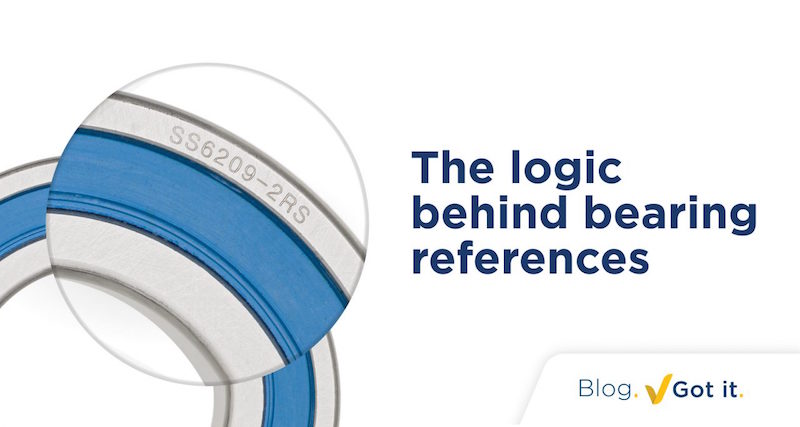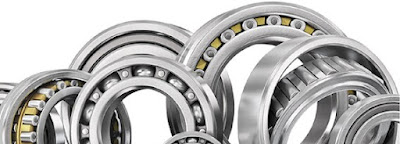The logic behind bearing references 2.
A bearing reference is not just a number. It contains a lot of information about the bearing. In this blog (reading time: 3 minutes) we will show you three important product characteristics in bearing references. You will be a bearing expert in no time!
 Composition of bearing references
Composition of bearing references
First, something about the complete bearing reference. It usually consists of numbers, sometimes combined with letters. The so-called prefixes and suffixes indicate additional properties of the bearing. Often manufacturers use different prefixes or suffixes for similar features. Without an explanatory list, they are confusing. In a previous blog you will find some examples of different prefixes and suffixes.
Fortunately, there is a clear logic behind the basic designation: the part of the bearing number without the prefixes and suffixes. These references are determined according to rules that most manufacturers follow. When you know the “formula”, you can easily discern some important details. Let’s see how that works.

Part 1: The bearing type
The basic indications consist of three fixed components. The first part is a number, a letter, or a combination of these. This is the description of the bearing type.

The following overview shows the most common bearing types:

The 6203-C3 bearing begins with “6” and is therefore a single-row groove ball bearing. And the 7416-B-MP is a single-row angular contact ball bearing because it begins with “7”. The first number gives a quick indication of the bearing type.
Part 2: The size series
Now we come to the second part of the basic designation. This is the “size series”. The first number of this section, which is sometimes omitted, indicates the width (for radial bearings) or height (for axial bearings)*. The second number of the size series refers to the outside diameter.
*Radial bearings capture forces perpendicular to the shaft, while axial bearings capture forces in the longitudinal direction of the shaft.

The table below shows the meaning of the number for the width (for radial bearings) or height (for axial bearings), as well as their corresponding outside diameter.

The higher the value, the wider the inner and outer rings. Often the ball size will also increase. Bearings with higher values can be subjected to heavier loads.
In our first example of 6203-C3, the size series is “2”. The table shows this is an average width class. And in our second example of 7416-B-MP, the size series is “4”. Which means it can withstand a (relatively) heavier load.
Part 3: The inner diameter
Finally, the third part of the basic designation. This refers to the inside diameter, also called the bore. These are the last 2 digits in the basic designation. A simple formula will calculate the inside diameter.

Is the number 04 or greater? Then multiply this number by five to get the inside diameter (in mm). Very simple. But there is (of course) an exception. If the number is less than 04, the inner diameter is as shown below:

Back to our examples. For 6203-C3, “03” indicates the inside diameter. The table above shows it is 17 mm. For 7416-B-MP, “16” indicates the inside diameter. A quick calculation (16 x 5) shows the inside diameter of this bearing to be 80 mm. It’s as simple as that.

In practice
Let us look at a final example. Suppose your customer calls and asks for 21317-E1-K from FAG. Using the above steps, your reply will immediately be: “Just a minute, let me check if we have this double-row spherical bearing with an inner diameter of 85 mm in stock!” Sounds good, right?
This blog is brought to you in cooperation with ABF.



Megjegyzések
Megjegyzés küldése